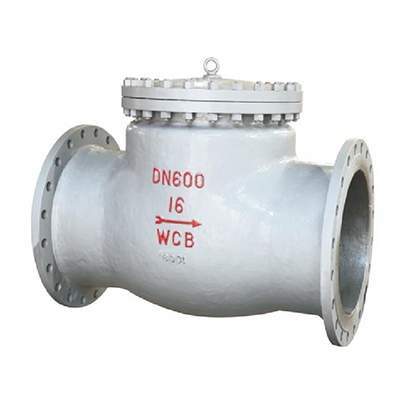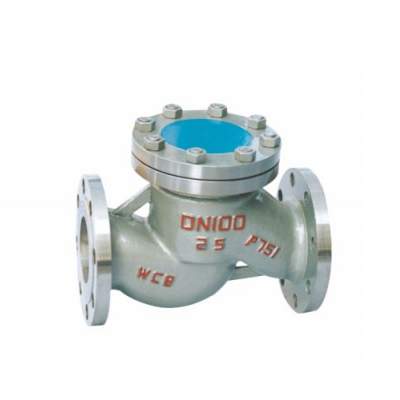Welcome to My Blog!
Before we dive into the content, if you’re interested in our products or have any questions, please feel free to visit our Contact Us page on the website. Our team is ready to assist you with inquiries, orders, or any support you may need.
Now, let’s get started on our journey together. I hope you find the content here insightful, engaging, and valuable.
What is a Water Check Valve?

A water check valve is a crucial component in any plumbing or piping system. Its primary function is to allow water to flow in only one direction, preventing backflow that could damage equipment, contaminate clean water supplies, or reduce system efficiency. Water check valves are used in a variety of systems, including residential plumbing, irrigation, HVAC, industrial piping, and fire protection systems.
Definition and Purpose
A water check valve acts as a one-way gate, opening automatically when water flows forward and closing when reverse flow occurs. This simple mechanism provides several essential benefits:
- Protects pipes and pumps: Prevents damage from reverse flow and water hammer.
- Maintains water quality: Avoids contamination of potable water systems.
- Reduces system downtime: Minimizes maintenance and repair needs.
Understanding its purpose is the first step in optimizing your plumbing system for efficiency and reliability.
How It Works in Plumbing Systems
Most water check valves rely on a disc, ball, or piston that responds to changes in water flow. When water moves in the desired direction, it pushes the mechanism open. When flow reverses, gravity or spring mechanisms force the valve closed.
Key points for optimal performance:
- Ensure proper orientation according to the arrow on the valve body.
- Maintain straight pipe runs upstream and downstream to avoid turbulence.
- Select a valve size compatible with system flow and pressure.
A well-chosen and properly installed check valve ensures smooth water flow, reduces energy waste, and prolongs the life of pumps and piping systems.
Types of Water Check Valves
Different plumbing systems have unique requirements, and there are several types of water check valves to meet these needs.
Swing Check Valve
A swing check valve features a hinged disc that swings open with forward flow and closes against the seat when flow reverses. It is ideal for low-pressure systems and is commonly used in household plumbing, water supply lines, and small irrigation systems.
Ball Check Valve
A ball check valve uses a spherical ball to block reverse flow. It is suitable for higher velocity systems or where a tighter seal is required. Ball check valves are commonly found in industrial pipelines, chemical processing, and water pumps.
Lift Check Valve
Lift check valves have a guided disc or piston that lifts to allow flow. They are suitable for high-pressure systems, industrial applications, and critical pipelines where precise control and minimal leakage are essential.
Selecting the right type depends on your system’s flow rate, pressure, and specific application. Proper selection improves system efficiency, reduces maintenance needs, and prevents premature valve failure.
Benefits of Installing a Water Check Valve
Water check valves offer a variety of advantages that directly enhance plumbing system performance:
- Prevents Backflow and Contamination: Ensures potable water safety and protects pumps and equipment.
- Reduces Energy Consumption: Maintains a steady flow, reducing the workload on pumps and minimizing pressure fluctuations.
- Minimizes Maintenance Costs: Avoids pipe damage, leakage, and costly emergency repairs.
- Enhances System Reliability: Ensures consistent water flow for residential, commercial, and industrial systems.
- Protects Against Water Hammer: Sudden flow reversals can create damaging pressure surges; check valves mitigate this risk.
Integrating a water check valve ensures your plumbing system runs efficiently, safely, and reliably.
How Water Check Valves Enhance Plumbing Efficiency
Installing a water check valve directly improves system efficiency by controlling water movement and maintaining consistent pressure.
- Stable Water Flow: Prevents backflow that could disrupt water pressure and flow rate, especially in multi-story buildings.
- Energy Optimization: Pumps and motors work more efficiently when flow is unidirectional, reducing electricity usage and extending equipment lifespan.
- Reduced Pipe Wear: Limiting reverse flow minimizes stress on joints, fittings, and valves, prolonging the life of the plumbing system.
- Improved System Performance: Prevents unnecessary cycling of pumps and ensures reliable operation in irrigation, industrial, and HVAC systems.
By maintaining stable flow and protecting equipment, check valves contribute to long-term operational efficiency.
Installation Guide for Water Check Valves
Proper installation is essential for maximizing a valve’s performance.
Choosing the Right Size and Type
- Material Selection: Stainless steel, brass, or plastic depending on water type, temperature, and chemical exposure.
- System Compatibility: Match the valve size and pressure rating to your system specifications.
- Application-Specific Type: Swing valves for residential plumbing, ball valves for higher flow, lift valves for industrial or high-pressure systems.
Step-by-Step Installation Process
- Shut off the water supply and relieve pressure.
- Verify the flow direction and align the valve according to the manufacturer’s instructions.
- Install with proper support to avoid stress on piping.
- Ensure adequate straight pipe length upstream and downstream to prevent turbulence.
- Test the system carefully to check for leaks or improper operation.
Common Installation Mistakes
- Installing the valve backward, which prevents it from functioning.
- Using incorrect valve type for system pressure or flow conditions.
- Ignoring upstream and downstream straight-pipe requirements.
Proper installation ensures maximum efficiency, reduces maintenance, and prevents damage to your plumbing system.
Maintenance and Troubleshooting Tips
Although water check valves are low-maintenance, regular inspections are critical for long-term efficiency.
Regular Maintenance Checklist
- Inspect for leaks, corrosion, or unusual noises.
- Remove debris that could obstruct the valve mechanism.
- Test operation periodically to ensure proper opening and closing.
Identifying Common Problems
- Valve Stuck Open or Closed: Check for debris or worn components and replace if necessary.
- Leaks: Inspect seating surfaces and clean or replace damaged parts.
- Noise or Vibration: Can indicate water hammer or misalignment; adjust or repair accordingly.
Extending Valve Life
- Use valves made of durable, corrosion-resistant materials.
- Avoid sudden pressure surges by using slow-closing valves or pressure regulators.
- Follow manufacturer-recommended maintenance schedules.
Applications of Water Check Valves in Different Systems
Water check valves are versatile and used in a wide range of plumbing and industrial applications:
Residential Plumbing Systems
Protects home water supply, pumps, and appliances by preventing reverse flow and contamination.
Irrigation and Agricultural Systems
Maintains consistent water delivery to crops and prevents backflow into main water lines.
Industrial and HVAC Systems
Controls flow in pipelines carrying water, chemicals, or hot fluids, optimizing system efficiency and reducing energy costs.
Fire Protection and Potable Water Systems
Ensures reliable sprinkler system operation and protects drinking water systems from contamination, meeting safety and compliance standards.
Choosing the Best Water Check Valve

Selecting the right water check valve requires careful consideration:
- Material: Stainless steel, brass, or durable plastic depending on application and water quality.
- Size and Pressure Rating: Correct sizing ensures optimal performance and prevents leaks.
- System Type: Residential, commercial, industrial, irrigation, or fire protection.
- Brand and Supplier Comparison: Consider price, durability, and customer reviews.
Conclusion
A water check valve is an essential component for improving plumbing system efficiency. By preventing backflow, maintaining consistent flow, and protecting pipes and pumps, it ensures system reliability, safety, and long-term cost savings. Proper selection, installation, and maintenance maximize its benefits across residential, commercial, industrial, and irrigation systems. Integrating water check valves into your plumbing strategy is a practical, cost-effective way to enhance system performance, reduce energy consumption, and prevent costly repairs.
FAQ
What is a water check valve?
A water check valve is a one-way valve that allows water to flow in only one direction, preventing backflow and protecting plumbing systems from damage or contamination.
How does a water check valve improve plumbing efficiency?
By preventing reverse flow, it maintains steady water pressure, reduces pump workload, minimizes energy waste, and protects pipes and equipment from wear.
What types of water check valves are available?
Common types include swing check valves, ball check valves, and lift check valves, each suitable for different flow rates, pressure levels, and system applications.
How often should a water check valve be maintained?
It is recommended to inspect and maintain water check valves every 6–12 months to ensure proper operation, clean debris, and prevent leaks.
Can a water check valve be installed vertically?
Some types, like ball and lift check valves, can be installed vertically, but swing check valves usually require horizontal installation for proper function.
Need Help Choosing the Right Water Check Valve?
If you’re unsure about which water check valve is best for your plumbing system, our experts are here to guide you. Contact us today for a personalized consultation, and ensure your system operates efficiently and reliably. Don’t wait until problems arise—get in touch now to protect your pipes, pumps, and property!
